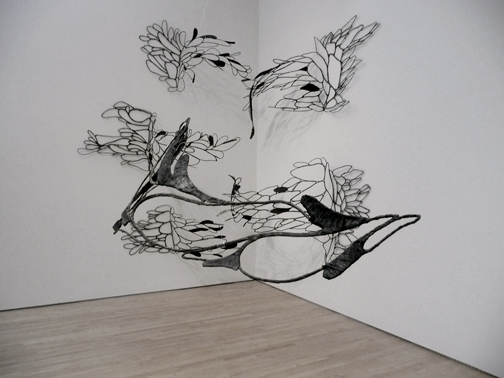Let's listen to some music.
I started with a few of William Duckworth's Time Curve Preludes. These are flowing, introspective piano pieces that bring to mind John Adams' Phrygian Gates. The idiom is consonant and built on repetitive rhythmic figures. Prelude I could even be modal. Nice stuff.
I had never heard of William Duckworth, but I did some research and found that he had written over 200 pieces! He studied composition with Ben Johnston and wrote a dissertation about the notation of John Cage. He worked on several internet-based projects like his multimedia event Cathedral. And he died just two years ago. Most significantly, Time Curve Preludes is considered by our buddy Kyle Gann to be the first work of postminimalism.
There was a long article to accompany Duckworth's Southern Harmony, but I decided to go into the listening first.
It was probably a bad idea. I understood that Duckworth was doing something revolutionary with old shape-note hymns from The Sacred Harp, but the first one was a tune I didn't know. The second was "What Wondrous Love Is This", which I DO know, so it was easier to follow. He used some sharp fourth intervals to create a Lydian feel, and some of the quartal/quintal harmonies anticipate Eric Whitacre or Morten Lauridsen. And this was written in 1981??? Wow.
I started reading the article as I listened to "Consolation", the first song of the set. This one is the most impressive, and the most clearly influenced by minimalism. The article describes how Duckworth's procedure here is creating a unison canon against the melody that grows farther and farther apart. The large amount of voice crossing that ensues produces a hypnotic, undulating texture.
There's something kind of awesome about Southern Harmony. Duckworth achieves epic effects with his material, turning these traditional tunes into something more forceful, urgent, and powerful. It serves to highlight the strength and longevity of these tunes and also meditate on our changing musical culture.
Next I read an article titled "Post-minimalism: A Valid Terminology?" It contained a lot of information and rhetoric I had heard many times before, showing how composers like Adams, Reich and Nyman can't be called minimalist because they all find unique ways to depart from the most rigorous definition of minimalism, whether through a changing melodic line, a faster harmonic rhythm, or irregular rhythmic patterns.
Om Shanti, by Janice Giteck, is long and I started listening too late in the night to get the full scope. After an opening section of chant-type singing over a drone, I skipped around and heard a more active pitched-percussion-driven section, a serene section of little scalar figures and the voice doubling a violin. The melodic and harmonic content reminded me of Let Down by Radiohead. At the end the drone and chant returned. I'll have to give this another listen later.
The Crack In The Bell by Daniel Lentz. WHAT IS THIS PIECE. It's so fascinating. It starts out seeming like a parody of an American pop ballad, and before you know it there are synths and chimes and some kind of large ensemble chugging away. Some of the lyrics were hard to understand, but I didn't really mind. This was just a profoundly unique synthesis of American music elements, and perhaps some lyrics in another language.
I did some research on this one. Apparently the text is from the e.e. cummings poem "next to of course god america i", an antiwar poem. That makes sense. The buoyant, facile surface of the piece enhances the subversive content of the poem.
The last assigned listening for tonight is Julia Wolfe's Believing. I'll save my analysis of that one for tomorrow when I present on Julia Wolfe and the rest of Bang On A Can.
 |
| Obligatory image. This is the first result I got when I searched "postminimalism" on Google. |
No comments:
Post a Comment